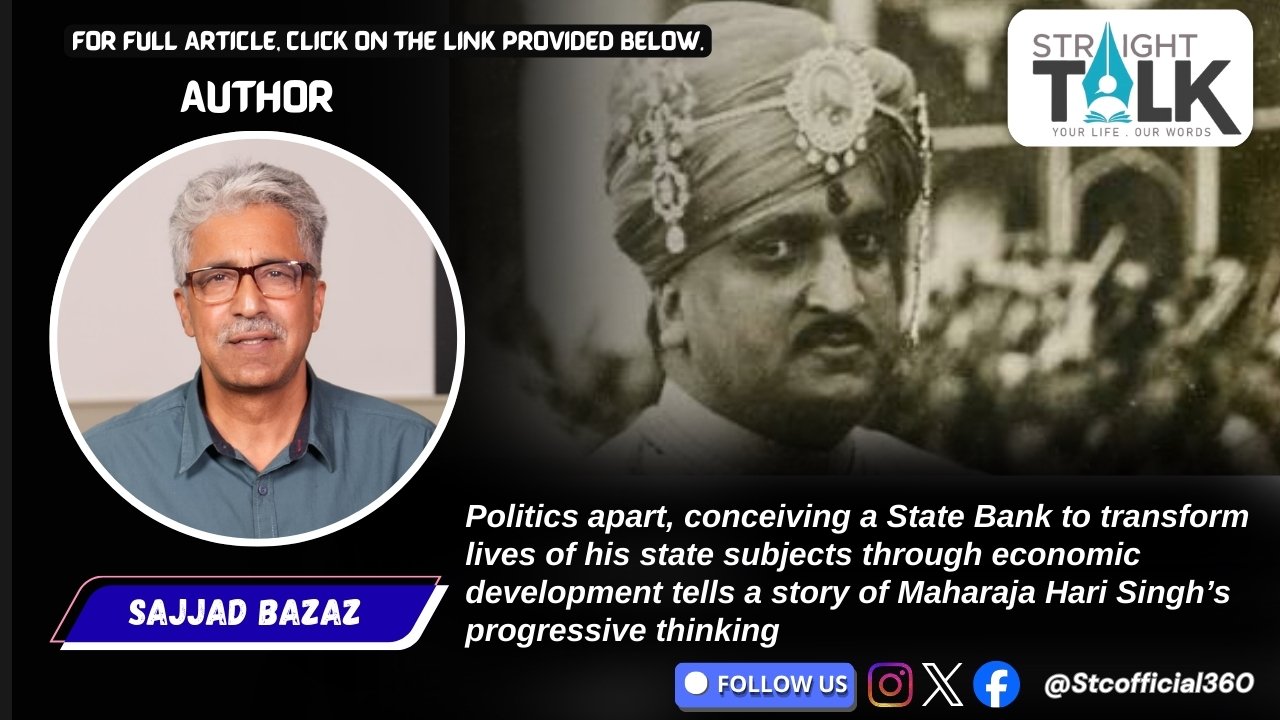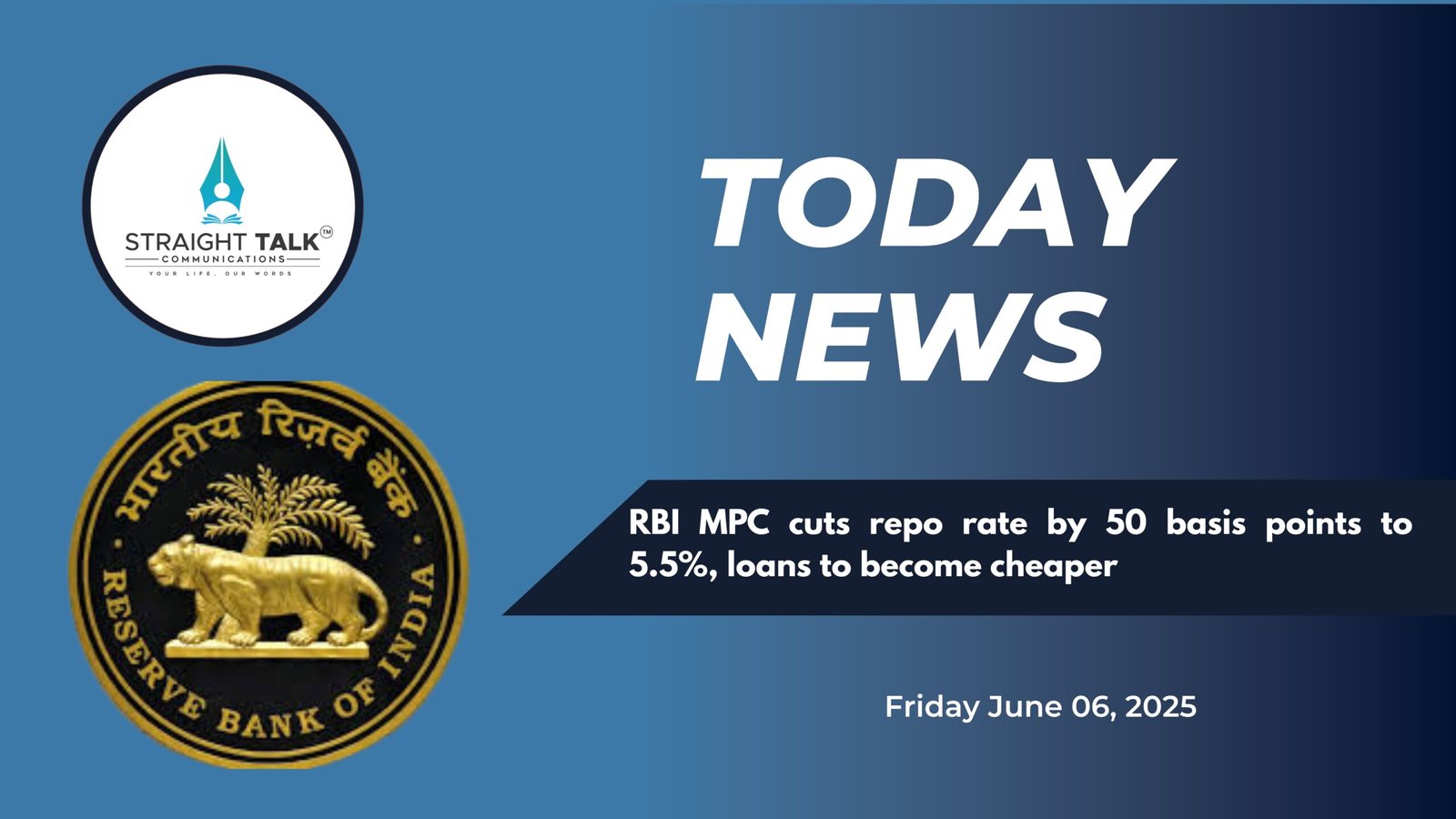Peoples’ Maharaja

Politics apart, conceiving a State Bank to transform lives of his state subjects through economic development tells a story of Maharaja Hari Singh’s progressive thinking.
Sajjad Bazaz
Let me begin today’s column with a statement dished out by Zareef Ahmad Zareef, a well known Kashmiri poet, writer, social activist, and environmentalist. During a STRAIGHT TALK (Podcast) session he spoke on diverse issues confronting Kashmiris. Among other things, he made a thought provoking, but a genuine remark about the types of governance witnessed by Kashmir. He said: “Jammu & Kashmir’s history is witness to the fact that an autocratic ruler has done more good to Kashmiris than the so-called elected representatives.”
Zareef was actually comparing the performance of Maharaja Hari Singh as Monarch of the princely state of Jammu & Kashmir and the popular government led by Sheikh Mohammad Abdullah, who served as the first elected Prime Minister of the Jammu and Kashmir state. Though he didn’t name them, the period of reference given by him suggested the names of the rulers during the period mentioned by him.
Without getting into the politics of the statement, evidence from history has put it on record that Maharaja Hari Singh was a man whose vision, progressive ideas, social reforms, principles and actions resonated far beyond his time. Historians have put his legacy transcending political boundaries, embodying the values of justice, social equality, and human dignity that remain relevant even in today’s contemporary world. “With a deep commitment to his people and a strong sense of justice, Maharaja Hari Singh was one of the few monarchs who genuinely endeavoured to improve the lives of his subjects across all sections of society, in an era where regressive social practices were the norm; he made bold and forward-thinking reforms,” writes a historian.
With regard to changing the lives of his state subjects through economic development, Maharaja Hari Singh played a smart move with his concept of establishing the State’s own bank, which could function more to drive economic development of the state of Jammu and Kashmir than to earn profits. The Maharaja’s concept of having its own state bank and then pursuing it to get it established and functional is one of the most successful banking stories worth telling the world again and again. Yes, I am talking about the institutional history of Jammu and Kashmir’s flagship company – the J&K Bank. The bank emerged as the backbone of J&K’s economic development right from its inception in 1938. In early 1930s, traditional moneylenders, better known as Munimjis, were in control of almost all financial transactions in the princely State of Jammu and Kashmir. These moneylenders used to lend money at exorbitant interest rates. However, at the same time some banks like Punjab National Bank, Grindlay’s Bank and Imperial Bank of India also used to function in the State, but to a limited extent. The role of these banks was reduced to the acceptance of deposits, as they could not grant loans and advance to the people of the state owing to the statutory limitation. It’s noteworthy that during that period law did not permit banks to hold properties as mortgages to secure loans; even at typically high, rather exorbitant rates of interest charged during that time.
Notably, during that period, the State was underdeveloped. Even as the Maharaja Hari Singh – led state government was trying hard to trigger developmental initiatives in the state, but lack of access to the finances became a major hurdle to the development of the State. In this backdrop, there was no significant improvement in the standard of living of the State Subjects.
To overcome this crisis, Maharaja Hari Singh conceived the idea to establish a State bank to come out of economic backwardness. To give a practical shape to Maharaja Hari Singh’s idea, the then Director of Industries and Commerce, Mr. D.N. Nagarkatti, worked on the project and subsequently a proposal for setting up the state’s own bank was aired. But, the scheme formulated by Mr. Nagarkatti was rejected by Raja Sir Daya Krishen Kaul, Lala Hari Krishen who had some expertise in banking and Col. K N Haksar who at that time was Director Special Organization, Chamber of Princess, on the grounds that the proposal was impractical.
Since Maharaja was determined to have its own State bank, it was on June 18, 1930 that a meeting was called in the office chamber of the then Finance and Development Minister, Mr. P.K. Wattal, which was attended by leading traders, manufacturers and local moneylenders. The participants in the meeting unanimously took a decision to approach Sir Sorabji N Pochkhanawala, the then Managing Director of the Central Bank of India, with a request to formulate a scheme for establishing a bank in the state of Jammu and Kashmir. Immediately on June 19, 1930, Mr. Wattal submitted a note to the Maharaja with recommendation that Pochkhanawala be approached. Maharaja approved the note on June 27, 1930.Sir Sorabji N Pochkhanawala, an eminent banker, burnt midnight oil and within a span of just three month, he submitted his recommendations to the Maharaja Hari Singh. In his report, submitted on September 24, 1930, Pochkhanawala made following three suggestions:1) A State Bank whose entire share capital is subscribed by the government of the day.2) A private Joint Stock Bank with the share capital subscribed by the public.3) A semi State Bank where the State could subscribe to part of the capital, while the balance was issued to the public. But the Management control could be held by the State.
Even as Pochkhanawala gave three suggestions to see the dream of Maharaja Hari Singh get realized, he was in favour of the third option. While emphasizing on the third option, he maintained that the State supervision was necessary to ensure that the monies of the people are safeguarded in letter and spirit. It was on September 29, 1930, that the cabinet, while showing respect to Pochkhanawala’s recommendation, approved the third option.J&K Bank, a Dream coming true: Subsequently, Articles of the Association to govern the new entity were approved. Shares were issued to the State and the public. The State subscribed half of the share capital of the new entity and 50 percent was issued to the public.
In 1938, the task of establishing the bank was accomplished and the first Board of Directors was appointed by the state Government. It was on October 1, 1938 that the Board of Directors resolved and adopted the Articles of Association, which were filed before the Register of Companies. The Registrar issued a Certificate of Incorporation on the same day.
Precisely, the outcome of the efforts of Sir Sorabji N. Pochkhanawala resulted in the establishment of the Jammu and Kashmir Bank Limited on October 1, 1938. Finally, the Certificate of Commencement of business saw the light of day on July 4, 1939. Since then, J&K Bank has transformed into one of the most successful banks in the country – a regional bank having national presence with international standards. During its transformation journey, the bank as a corporate citizen transformed the lives of the people of Jammu & Kashmir.
(The author is Editor-in-Chief at Straight Talk Communications)







